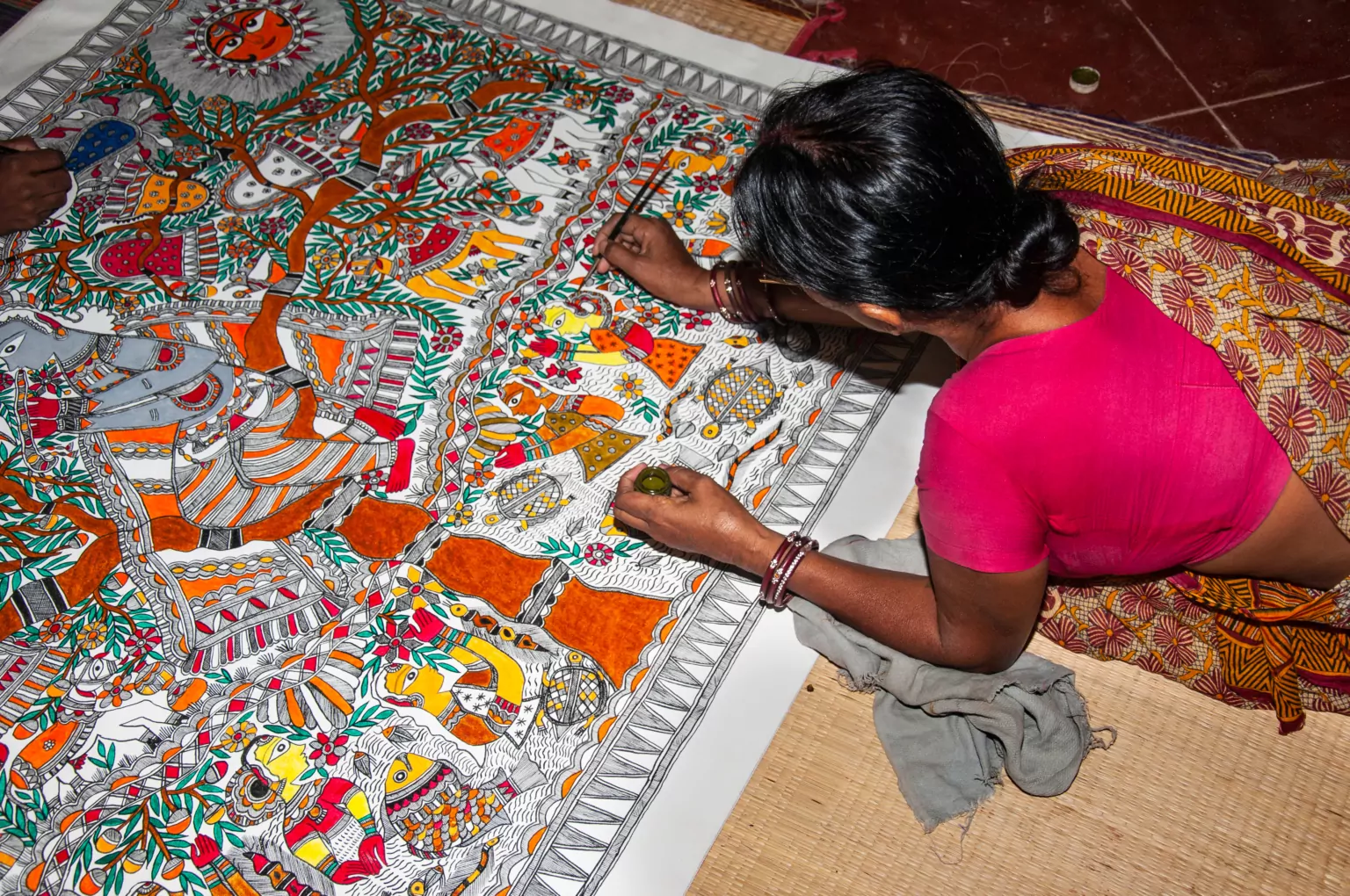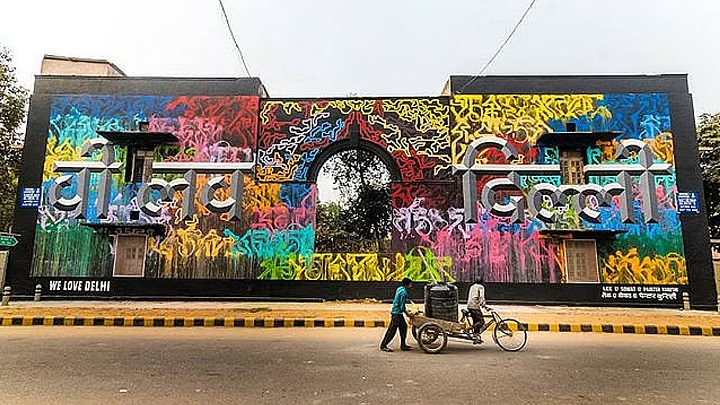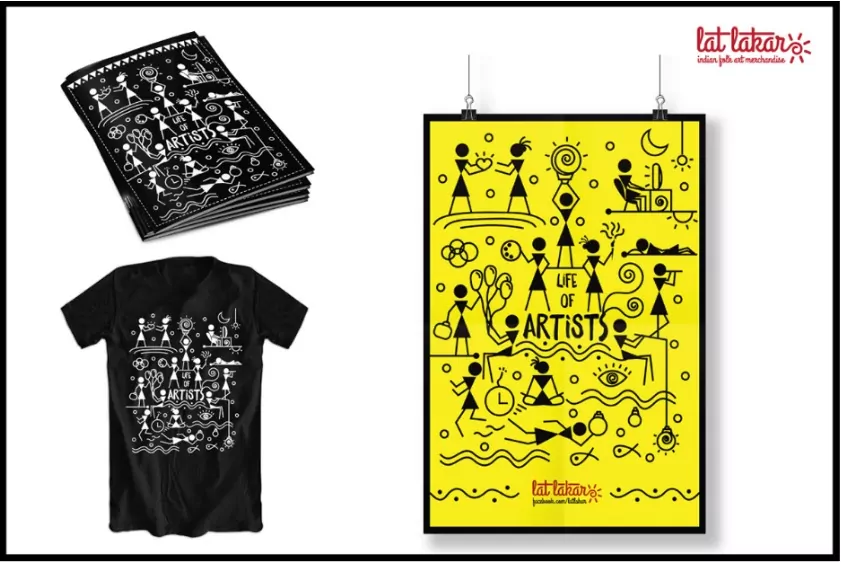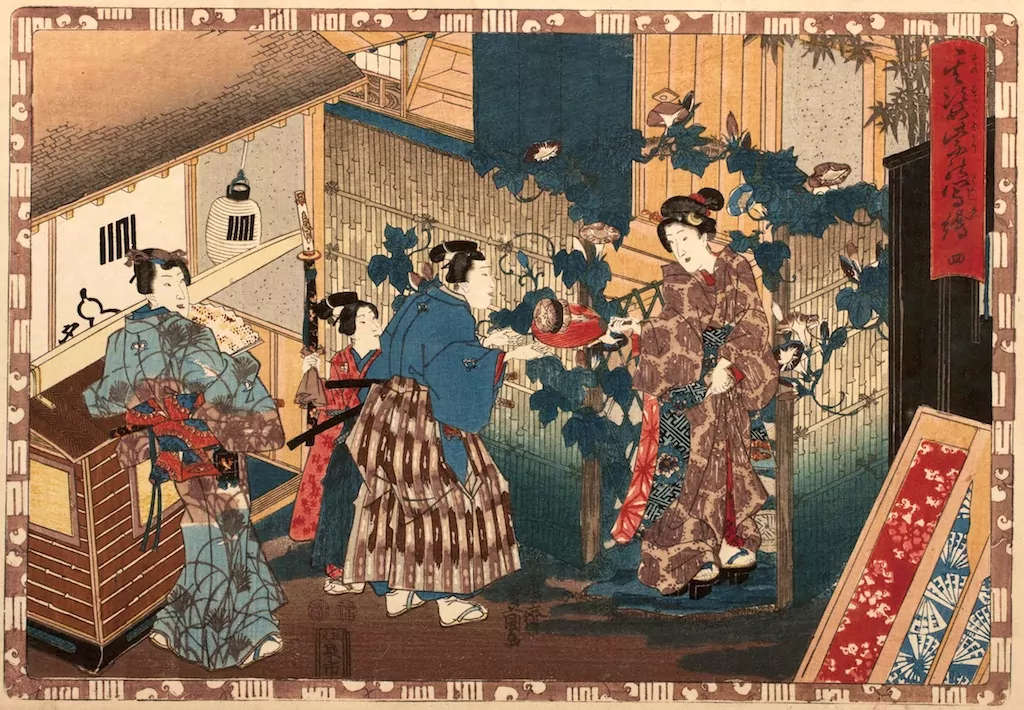The Art Of Storytelling Using Motifs In Indian Art Forms
Traditional Indian storytelling is filled with symbolism and metaphors. Motifs can be used to weave a story by associating simple elements with a myriad of qualities. The multi-faceted nature of symbols has always featured prominently in traditional Indian art forms. Depending on the theme and the intentions of the artist, the same motif may have different meanings in different paintings. Some motifs feature in multiple traditional art forms, whereas others are rarely used.
Certain motifs were said to ward off evil and were used as charms or protection. Other motifs symbolise prosperity and joy. Almost all motifs have more than one meaning associated with them. Rooftop invites you to explore the varied world of motifs in traditional Indian art forms.
1. The Bird With A Thousand Eyes
The prideful peacock motif continues to evoke awe-inspiring emotions in the hearts of those who see it. Indian artists used peacocks to symbolise life, power, prosperity, knowledge, royalty, and beauty. Peacocks are sacred to Hindus, as they are the vahan (vehicle) of Lord Kartikeya. In Pichwai paintings, dancing peacocks that mimic Lord Krishna’s raas leela are used as a backdrop for Shrinathji’s idol during the monsoon season. Peacocks represent prosperity as they herald the welcome of monsoons and thus a bountiful harvest. They can also represent immortality due to the ancient belief that their flesh does not decay. The pattern on their feathers resembles an eye and artists would artistically represent it as an evil eye symbol.
Peacocks are an important motif in Madhubani paintings. The women of Jharkhand paint peacocks on the walls of their homes in the Sohrai art style. Khovar painting centres around nuptials and illustrates a pregnant peacock or mother peacock with her chicks as a symbol of fertility and motherhood. Gond paintings use the peacock motif to illustrate the strong bond that tribal communities share with nature. Unlike today, it was not uncommon for peacocks to roam in rural areas, as depicted in Cheriyal paintings of Telangana.
Also read: Significance Of Peacock Motif In Indian Art
2. Lotus, Symbol Of Rebirth And Creation
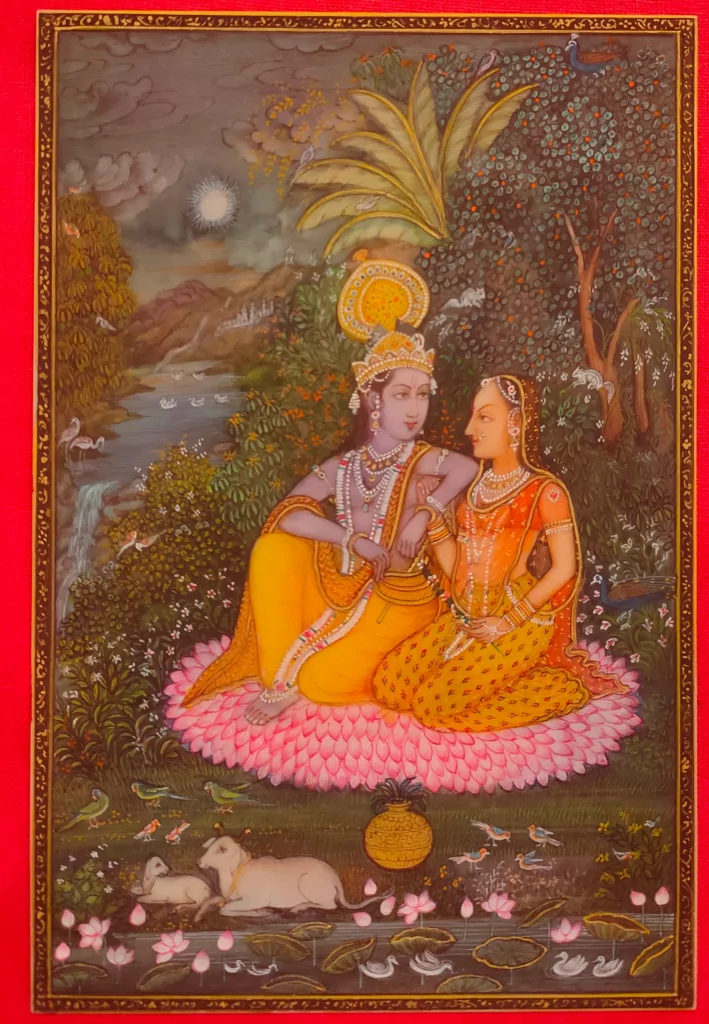
Artists associate lotus flowers with Lord Vishnu and Lord Krishna and use them to symbolise purity and beauty. Lotus flowers are also sacred in Buddhist depictions. The enlightened Buddha sits on a lotus with his legs crossed, i.e., in the lotus position.
Hindu mythology depicts the goddess Laxmi as well as Lord Brahma sitting on a Lotus. Lotus flowers are the meeting point of the earth, sky, and water and thus seem to represent the sacred union of life in Indian art forms. We see them frequently in Pichwai, Phad, Mata ni Pachedi, and Tikuli paintings.
(image source: directcreate.com)
ni Pachedi (image source: dsource.in)
The pure and sacred lotus flower rising from the muck and muddy waters is used as an allegory for life; sometimes innocence and beauty bloom in a polluted environment. The Lotus depicts the trials and tribulations of life or the soul’s journey from darkness to light. Lotus flowers symbolise energy and creation for Hindus. In contrast, Jains and Buddhists regard them as symbols of peace and purity. Madhubani paintings extensively depict lotus flowers. They were a popular motif in Rajasthani miniature paintings.
Also read: Timeless Elegance: Floral Motifs in Rajasthani Miniature Paintings
3. Fish: Bringing Waves Of Good Fortune
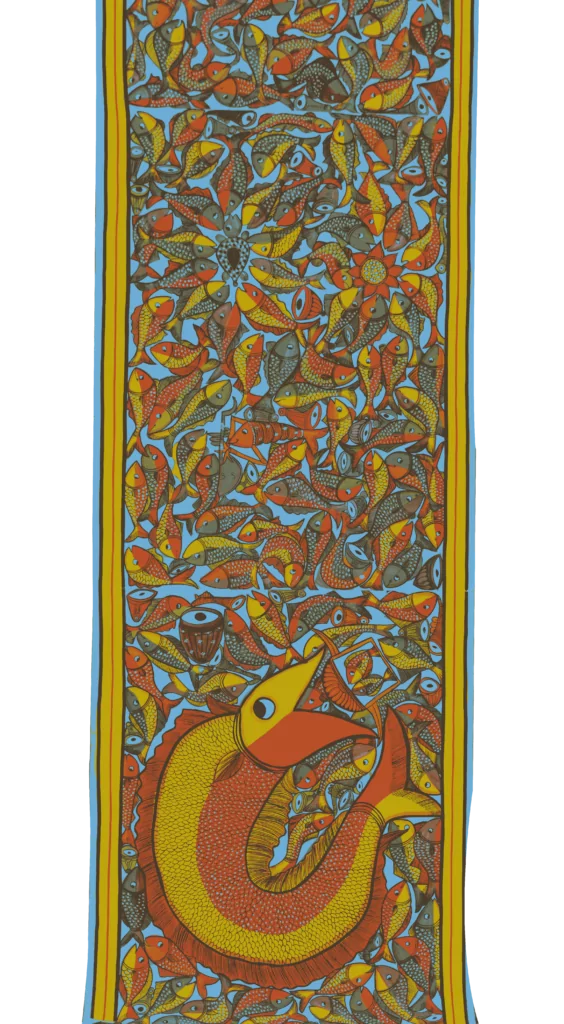
Fish is one of the Hindu zodiac signs. It symbolises fertility, abundance, and good luck. Fish thrive in fresh and clean water and thus were seen as symbols of wealth and prosperity. Fish scales are a common motif in Gond art. Madhubani paintings contain depictions of fish in pairs of two and represent the presence of the goddess Lakshmi. Aquatic themes feature in the Bhil art of Jor Singh, a contemporary Bhil artist and husband of Bhuri Bai.
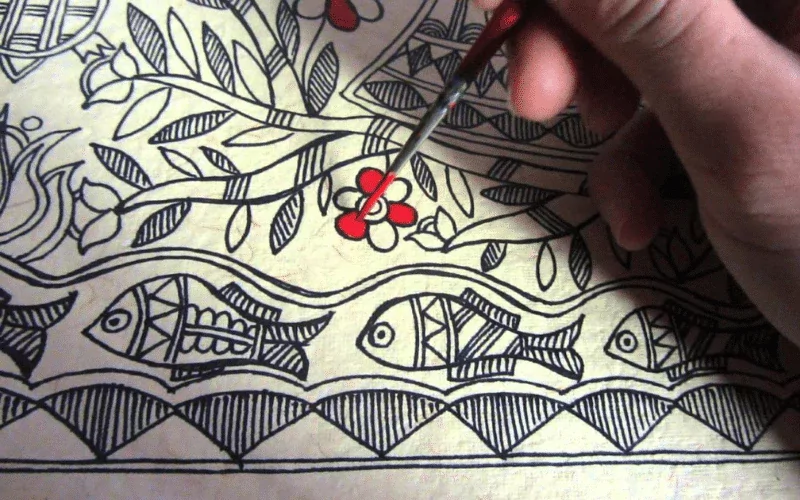
We frequently see the theme of ‘Fish Wedding’ in Pattachitra paintings. It is the story of two Dariya fish getting married while other fish gather around and make merry. While music and festivities surround them, the fish are oblivious to the Boal fish that has suddenly appeared. The Boal devours the smaller fish, angry that it was not invited to the wedding. This story depicts social hierarchy and power imbalances in society. Fish motifs are painted before festivals in many Indian art forms, as they are considered to be auspicious and bringers of good fortune.
Also read: Wildlife in Indian Folk Art
4. The Tree Of Life And Interdependence In Indian Art Forms
The Tree of Life is usually symbolised as a huge and bountiful tree that harbours its own ecosystem. Birds, insects, and humans flock to it for food and shelter. The deep roots of the tree represents the connection to the past, whereas the strong trunk portrays being grounded in reality. The tree of life motif can symbolise the interdependence of life forms on each other. The Tree of Life is one of the central motifs of Gujarat’s Rogan art.
Traditional art often portrays Peepal and Banyan trees as trees of life. Madhya Pradesh’s Gond art depicts the Mahua tree as the tree of life, as all parts of it are used by the community. The Golden Kadamba tree is another example of a tree specific to the culture being represented as a tree of life. Pichwai paintings frequently feature this motif. The Tree of Life motif features in contemporary Mata Ni Pachedi paintings by artists such as the Chitara family.
5. Indian Art Forms Celebrating Mango, The King Of Fruits

The Mango tree symbolises abundance and good fortune. Mango leaves are considered holy in Hinduism. Mangoes are one of the most beloved fruits of the country and thus feature in several Indian art forms. There are theories that mangoes inspired the Paisley motif. According to these theories, the kairi designs that feature on Kashmiri shawls are an imitation of Paisley motifs.
Company style paintings by Sita Ram (architecturaldigest.in)
Mangoes and Mango trees feature prominently in Miniature paintings. They depict prosperity, friendship, sweetness, and abundance. Artists would depict mango trees as auspicious omens. The Mughal emperor Jahangir enjoyed mangoes. Akbar even owned a grove of 100,000 mango trees in Darbhanga! There are allusions to ripe mangoes, mango season, mango groves, blooming mango trees, and the plucking of mangoes in the paintings of those times. Mango trees laden with fruit are an important motif in Cheriyal paintings as well, as we can see in the below painting by the artist Sai Kiran Dhanalakota.
Exploring Meaning Through Motifs In Indian Art Forms
There are hundreds of motifs used in traditional Indian art, with some being popular in multiple art forms and others restricted to only a few. Some other prominent motifs are the conch shell, coconut trees, paisley, flute, sun and moon, etc. Each motif is essential to communicating the story of the painting and creating the right mood and theme.
We can explore traditional Indian art by examining its depictions of the extraordinary through mundane, everyday symbols. Understanding motifs, their significance, and their design is the first step in the learning of Indian art forms. Rooftop’s workshops and courses aim to teach traditional Indian art forms by helping learners develop a better understanding of their central motifs.
Download the Rooftop App from GooglePlay or AppStore and enrol in our Maestro courses!
Discover us on Instagram @rooftop_app for all things on traditional Indian art forms.
By Melissa D’Mello

